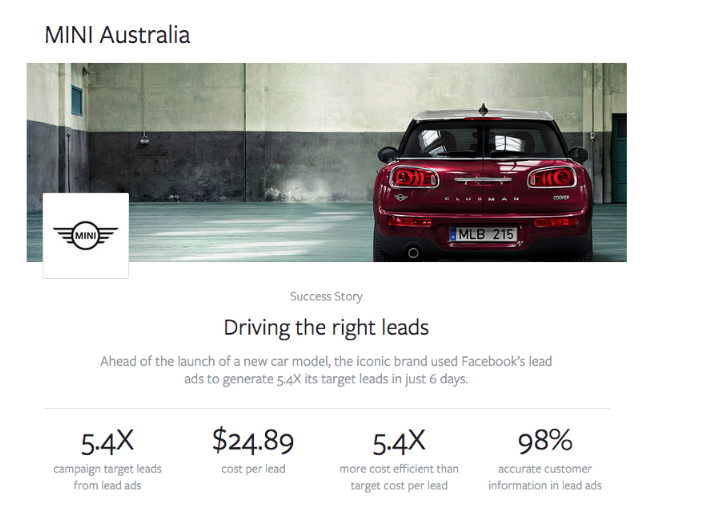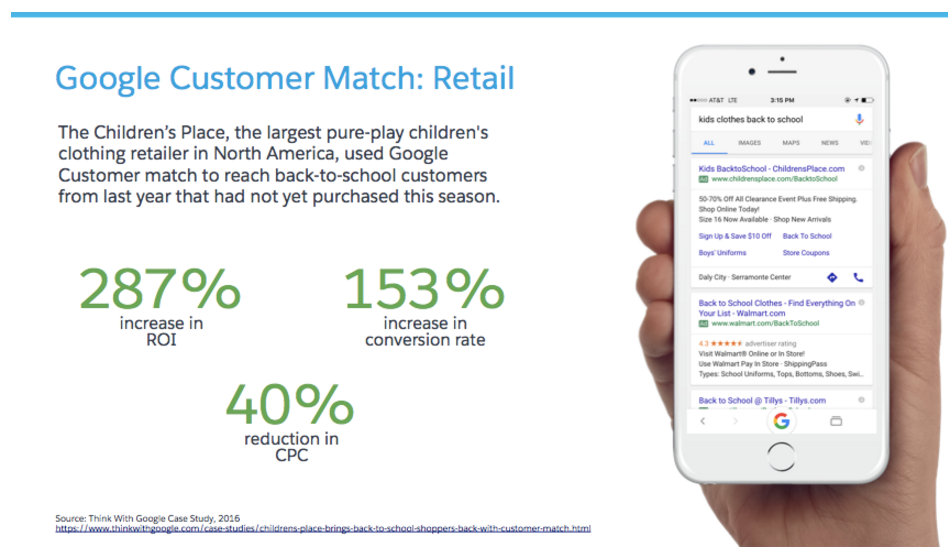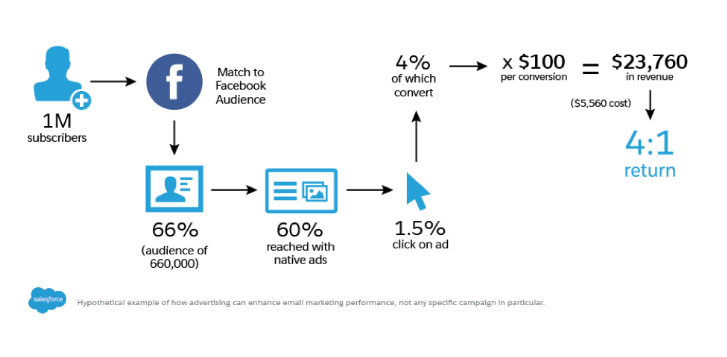
Get your FREE 30-day trial.
Please complete all fields.
Most retail marketers share similar goals: they want to acquire and foster relationships with individual consumers across devices, channels, and store-front locations. To do so efficiently, they must capture customer data to deliver personalized experiences, and then to attribute sales to marketing efforts. Marketers have an incredible opportunity to accomplish these objectives with the combination of lead ads on Facebook, Google Customer Match, and the coordination of email and advertising. Let's look at a few examples.
In a recent Facebook for Business customer success story, MINI Australia used Facebook lead ads to efficiently engage with potential buyers. The main objective was to generate qualified leads, so the ads invited Facebook users to register to receive more information about a new car ahead of its launch. This campaign generated 5.4X campaign target leads at a $24.89 cost per lead.
As the story demonstrates, Facebook lead ads are great for quickly capturing relevant customer data as a user scrolls through their feed since the lead form pre-populates with the data Facebook has on the user. Use this ad format to drive email newsletter signups and/or acquire new customers! Learn more about the Salesforce integration with Facebook lead ads in our breakout session at Dreamforce featuring Douglas Weiss, Product Growth Team Manager of Partnerships at Facebook).

Once you successfully capture the data you need for customers and drive them to purchase, you can use that data to further engage your customer base. With Google Customer Match you can target search ads to your known customers when they turn to Google to do research for their next purchase. One of the largest children's clothing retailers in North America, The Children's Place, used Google Customer Match to reach back-to-school customers who hadn't purchased since the previous season. According to Think With Google, the company saw a 287% higher ROI and 153% in conversion rate for their search campaigns. (Learn more about the Salesforce integration with Google Customer Match in our breakout session with Cedric Dupont, Product Manager at Google.)

To achieve the goal of attributing sales to marketing, retail marketers need a cohesive customer journey that reaches the consumer with the right message, at the right time. This requires CRM that provides a single view of the customer and connects sales, marketing and customer service. This hypothetical example on the Salesforce Marketing Cloud blog shows how marketers could double revenue from the same email audience by simply adding a second channel: advertising.

For more overall benchmarks and detailed industry trends for Facebook, including the performance of the retail industry for Australia, Germany, the United Kingdom, and the United States, check out the full Q2 2016 Advertising Index Report.